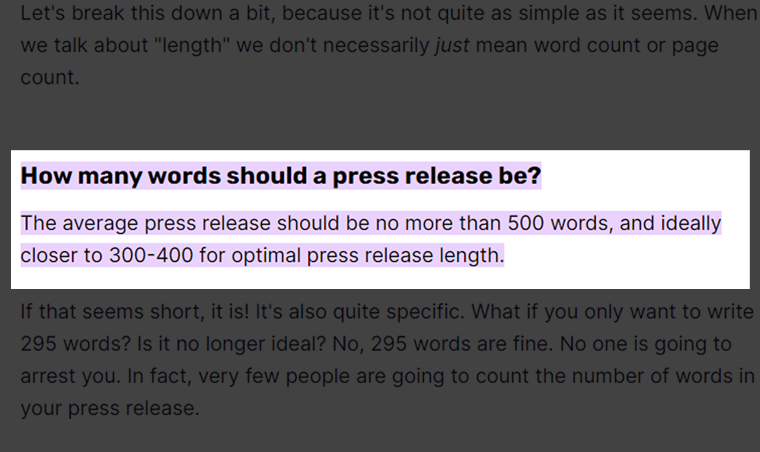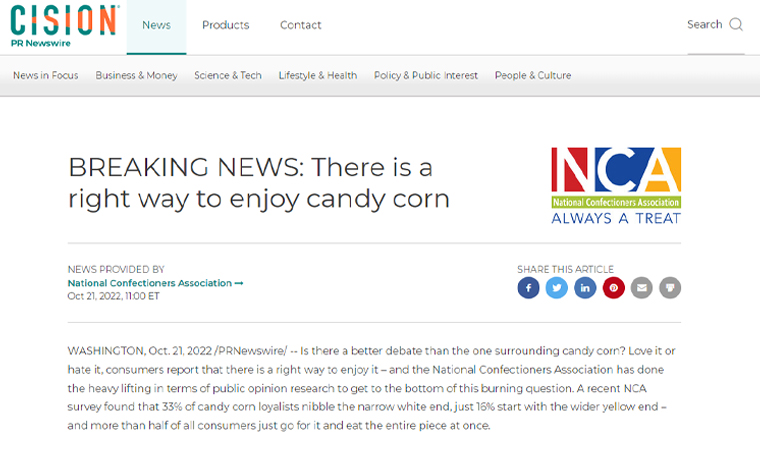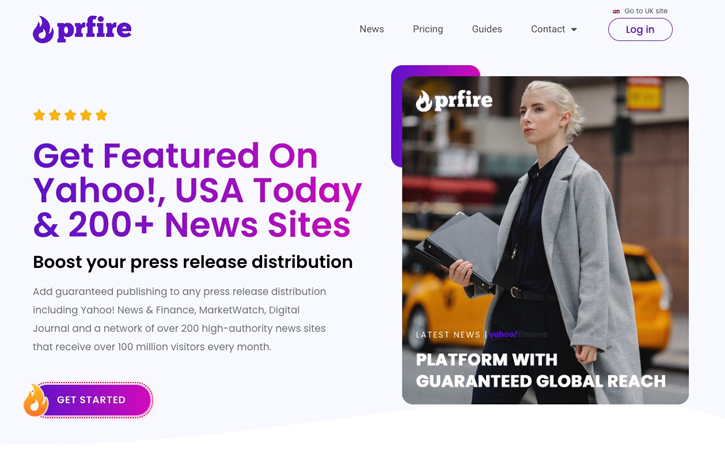
One of the most complicated aspects of creating good press releases for your business is including all the valuable information they need. From your title to your editor’s notes, every sentence and every word needs to be optimized for length and to convey necessary information with as little fluff as possible.
This distinction is essential because press releases have a specific job: to attract enough attention from reporters and provide enough information that they can write a solid piece while still giving them avenues to research more if they need to.
Moreover, it needs to do this in a short amount of space. Typically, a good press release can be presented on a single standard sheet of paper, though, of course, press releases are rarely actually printed and handed to reporters these days.
Press releases need to be short because reporters are often inundated with them. When they have potentially dozens or even hundreds of press releases to sort through each day, anything that takes an unusual amount of space or effort to comb through is more likely to be discarded than used.
Reporters are busy folks; they want to get through all the tips in their inboxes and get on with their lives quickly.
Since “a sheet of paper” isn’t a perfect definition, how long should a press release be in this digital age? Let’s break it down.
General Estimates and Popular Recommendations
Depending on who you ask, the ideal length of a press release varies. The only thing everyone agrees on is “keep it short.” The goal is to convey information as concisely as possible and respect the time of the journalists, editors, and other people who may be seeing your press release.
At the high end, this tends to be about 500 words. Anything over 500 words will roll over into another page, and there’s almost definitely going to be something you can cut because it’s not necessary to the issue’s core.

Remember, the longer and more wordy a release is, the more likely journalists will ignore it.
The news cycle is so fast these days that if it takes more than a few minutes to understand the subject, it’s only worth the time if there’s a good reason.
On the low end, a general “minimum” length for a press release is 200 words. The sweet spot is somewhere between 300 and 400 words. You will need more than 200 words to convey the relevant information necessary for a journalist to write about the issue.
You’re not going to be arrested or fired if your release is 198 or 502 words long, but, you know, you’re getting mighty close to that line.
For reference, by the time you’re done reading this paragraph, this entire article up to this point will be a hair over 500 words. That’s the amount of space you have to work with.
A Possible Exception: For-Publication Press Releases
Generally, when we talk about press releases, we’re talking about an informative documents provided to media outlets. It goes directly to tip lines, editors, reporters, journalists, and other people who are likely to be creating news content about your industry and may find a breaking story about your business worth writing about.
This definition ignores one kind of press release you frequently see around the web: the direct-publish press release. These press releases aren’t media tips for a journalist to write original content; they’re just uploaded and published as-is.

These kinds of press releases can appear on sites like PR Newswire, low-quality press release aggregators, or published as-is on industry blogs and news sites.
While these press releases generally keep to the form of a press release, there’s an argument to be made that they would be better off in a blog post format.
This confusion is expected because they aren’t considered “press releases.” They’re meant for low-quality bulk syndication, and as such, they often don’t perform very well. They often need proper formatting, answer all of the relevant questions, and need to include more information for a reporter to create their content.
By contrast, taking the same topic, creating a variety of unique content to present it, and offering those to various publications for use as exclusive, unique content is more likely to be valuable to your business than a widespread press release. The duplicated content nature of the general press release also runs the risk of devaluing the links, content, and even destination of the press release itself.
Of course, this steps into content marketing territory, with outreach and influencer marketing rather than simple press release distribution. That means you can’t automate it, it’s a lot more effort to do correctly, and the results require a more significant investment to get any returns.
Ultimately, choosing between a standard press release and a more blog-like news release is your decision.
Press releases certainly have their place, after all.
Understand Your Target
While the general concept of a press release is a single document created and sent off to hundreds of journalists, the reality is that you can do much better by customizing your press release to your target audience.
For example, if you’re a small business with relatively little exposure, you should include a section about who you are and what you do. But, if you’re sending your press release to a reporter you’ve worked with in the past and who you know is familiar with your brand, should you leave it there?

The answer may be no.
We’re not saying you need to create a customized press release for every journalist you target.
That would be a ton of work for relatively little benefit. But, it can be beneficial to build lists of journalists. Something like:
- People who have covered you before and can be expected to be familiar with your brand.
- People who haven’t covered you before but can be expected to know the basics.
- People who don’t likely know who you are but may be interested, having covered similar topics before.
- People who don’t know who you are and only might have some interest in covering your topic.
There are four categories, four simple variations, and an easy path to upgrade journalists and media producers from one to the next.
What does this have to do with press release length? Well, it allows you different degrees of flexibility in terms of what your press releases can contain. If people in the fourth category require 100 words of company profile and product description, it only leaves a couple of hundred words for the meat of the five Ws in the press release. Conversely, people in the first category only need some of that, and you can include more relevant information.
Of course, this isn’t always guaranteed. A journalist who has covered you before might not remember everything about you and may still need the basics for a refresher. Leaving it out could make it less likely that they’ll cover you because they might need to do more research than they want to do. If you make it easier for the journalist to share your story, you’ll improve the chances that they’ll decide to pick it up.
Individual Section Breakdowns on Length
Press releases are composed of various parts, usually templated in a specific order and working as a more significant part of a whole. Each of those parts can have a general word count length you can aim to hit.

1. Headline Length
Your press release headline should be under ten words long. You want this to be brief, to the point, and catchy enough to attract attention.
Trim the fat from your headlines and keep them short and to the point! The longer it is, the more likely it is to be cut off when various systems, like email subject lines, truncate. Google meta descriptions limit the title to about 580px in length, somewhere between eight to ten words (depending on the size of those words). If your title is longer than that, it might also be cut off on Google Search, which can make your press release less attractive to visitors and hurt your click-through rates.
Total: ~10 words.
2. Subtitle Length
Most press releases lead with a subtitle that adds more context and a leading question or detail to attract attention. This subtitle is still relatively short, but since it’s not the first impression, it has more room to breathe. Generally, you want to aim for 20 words or less.
Total: ~30 words.
3. Opening Sentence Length
Similar to your subtitle, your opening sentence is often your last chance to hook a reporter before they decide whether they want to read more or move on to the following press release in their exceptionally long inbox. Try to include as many of the five Ws in this sentence as possible, but don’t worry if you can’t hit all five. Like the subtitle, keep this to 20 words or less.
Total: ~50 words.
4. Opening Paragraph Length
A good opening paragraph, counting your opening sentence, should be focused on answering all five Ws (Who, What, When, Where, Why) in concise, attractive terms. This area is your chance to convince an interested journalist that the topic is genuinely worth covering. You should spend plenty of word count here. Right?
Wrong. You have about three sentences here, maybe four, and should be at most 30 words in general.
Total: ~80 words.
5. Body Length
The main body of your press release can be more leisurely and contains more detail, answers to questions, and information a journalist might want. After all, if they’ve read this far, chances are much greater that they’ll want to cover your subject. However, this main body has an important role; it needs to provide the reporter with all the information they’ll need to write a baseline piece on your subject.
If they have to go out and do more research, they’re more likely to move on to save their own time.
Many common tips to improve the main body are similar to those for any web content. Keep paragraphs and sentences short. Use formatting, bullet points, and line breaks liberally. Make it easy to read and extract information from, and ensure that every sentence has value.
The main body will consist of several paragraphs, and since it’s where the meat of your press release lives, it can take up to 200 words for a quick press release.
Total: ~280 words.
6. Closing Paragraph Length
Your final closing paragraph should end strong, summarizing why your press release is newsworthy and matters. Like the opening it mirrors, it should be about 20 words.
Total: ~300 words.
7. Boilerplate, Contact, and Editor’s Notes Length
Different press releases will vary the information they include in this post-closing section.
Some press releases need little more than 50 words here, while others might go as much as another 200 if there’s much to cover. This section contains your company information, product information, information about essential individuals in the story, contact information, and any further notes. It’s also where most customization for different audiences will take place.
What information is necessary here, and what isn’t?
Total: 350-500 words.
You can see how the bulk of the word count in a press release is taken up in a few sections.
Keep in mind, though, that those sections can be customizable.
Creating Top-Tier Press Releases
While the above breakdown may seem rigid, it’s highly customizable. Different press releases from other companies will convey different amounts of information in various numbers of words.
If you want to create excellent press releases, we highly recommend browsing the rest of our blog for more resources. We’re constantly expanding the topics we cover.

If you have a question and we still need to answer it, let us know.
On the other hand, you may want to spend only some of the time and effort necessary to trim down a press release and keep it in a reasonable word count. That’s fine too! In that case, we’re happy to write and distribute excellent press releases for you. Just click here, pick which option is right for you, and we can put your press release in front of the world. You can check our press release page to see the thousands of businesses we help promote every week and some of the incredible placements we’re able to help them secure!
